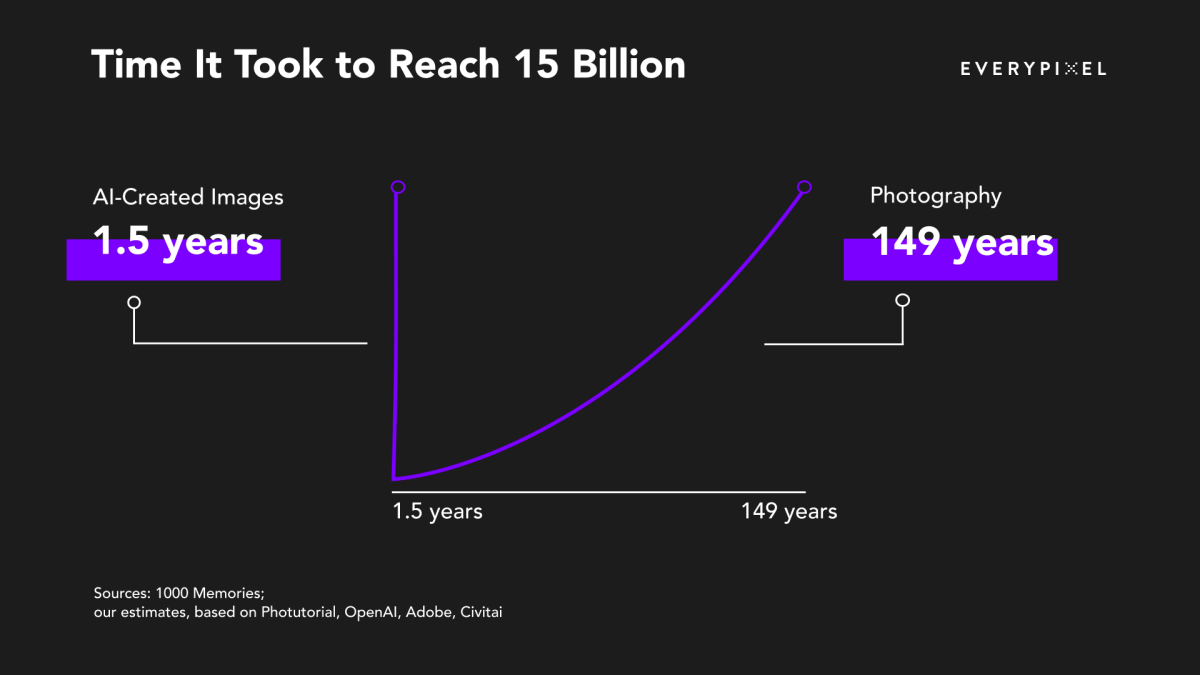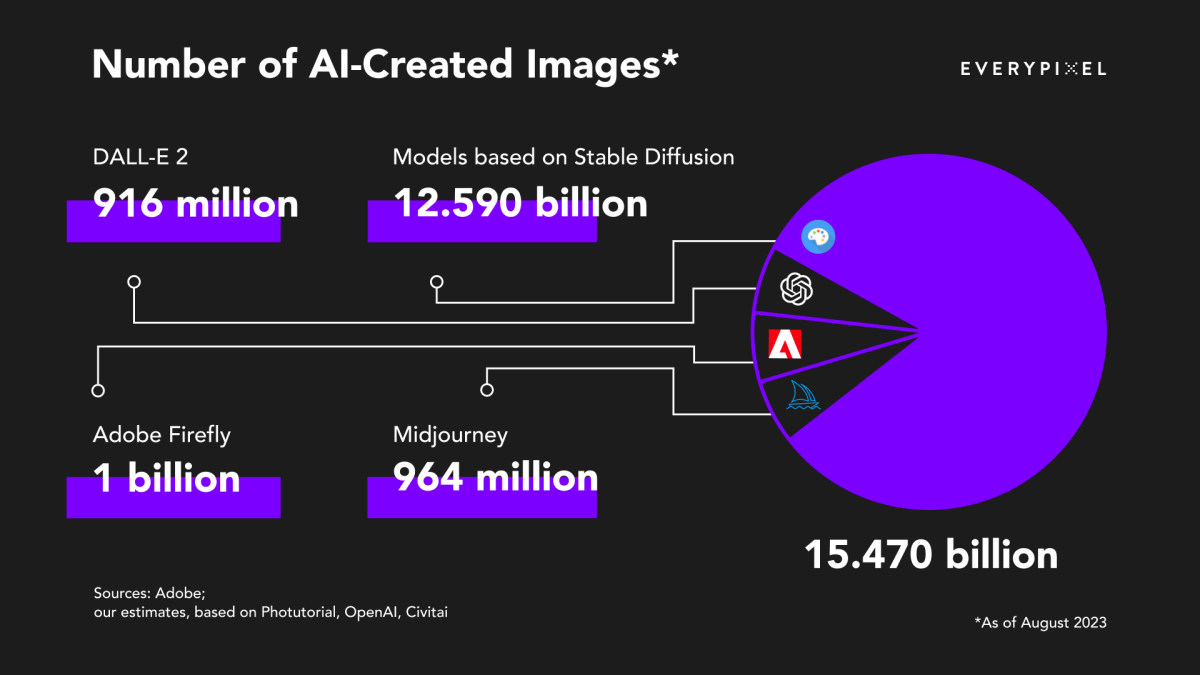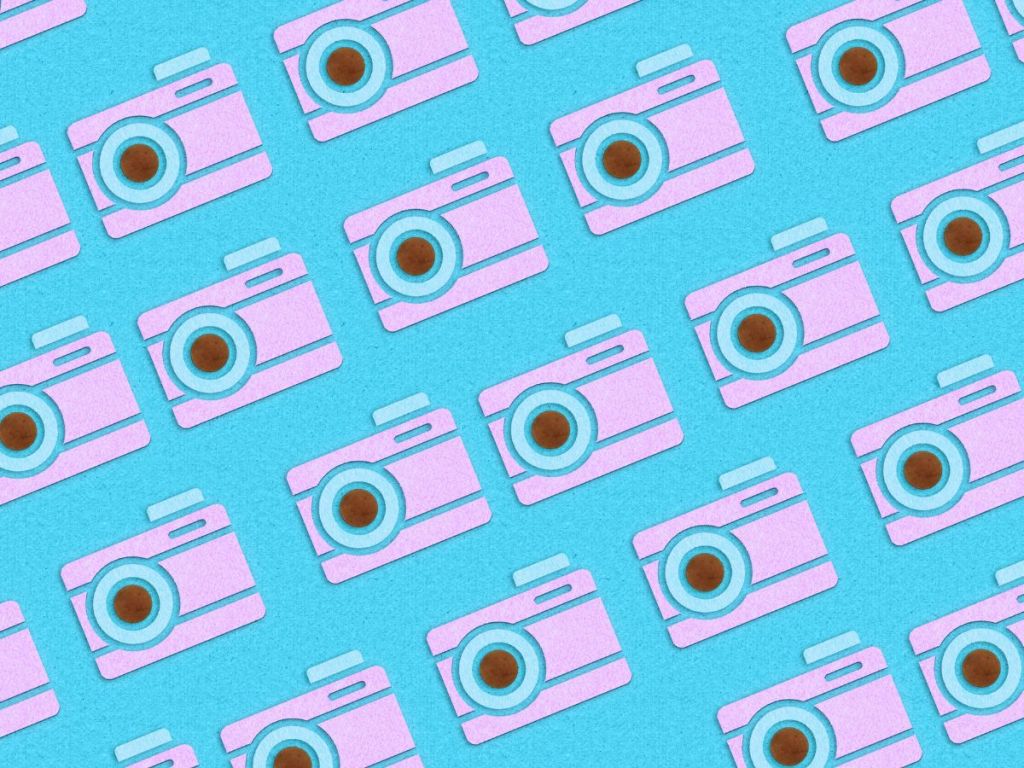In less than one year, AI has now produced as many AI-generated images as photographers have in the last 150 years, according to a latest report by Everypixel.
The stock image database released an ‘AI Image Statistics’ report analysing the billions of AI-generated images created with text-to-image algorithms since 2022. They found that since last year, 15 billion AI-generated images have been made. However, from the first photograph taken in 1826 until 1975, it took human photographers 150 years to create 15 billion photos.
In other words, it took AI technology only a year and a half to reach the volume of production by human photographers.

AI art generators: Stable Diffusion
Of the mainstream AI art generators, Everypixel’s report reveals that Stable Diffusion is the most popular tool among users.
Stable Diffusion, as well as models, services, platforms, and apps that use Stable Diffusion’s API, have created about 12.59 billion AI-generated images in existence. That’s approximately 80% of AI-generated images that you see online.
In second place is Adobe Photoshop’s AI-powered image tool Adobe Firefly, which has already created 1 billion AI-generated images since its launch three months ago. This also made Adobe Firefly the fastest-growing AI art generator in the space.
It’s interesting seeing this stat about AI doing in mere months what took humans 150 years. Its similar to how the a few months ago, 40% of code on GitHub was AI generated and how recent GitHub surveys suggest over 90% of developers use AI, Mark Monfort, co-founder of NotCentralised, tells The Chainsaw.
At the end of the day, these are tools just like the calculator and computer were. People won’t lose jobs to AI — they’ll lose jobs to people who know how to use AI, he explains.

Next, DALL-E 2, an AI art generator owned by ChatGPT’s parent company OpenAI, sees an average of 34 million AI-generated images created per day.
“We don’t know for sure what time period OpenAI meant by this number, or if they took an average volume of images generated. We assume that this is an average, which means that approximately 916 million images have been generated on a single platform in 15 months,” Everypixel elaborates.
AI images flood the internet
Latest statistics by Everypixel illustrate the prevalence of AI-generated images, and hints at the extent to which most feed on traditional artists’ work.
In mid-August, artists in China called out the ‘Chinese Instagram’ app Xiaohongshu for allegedly stealing their work without consent to feed the app’s AI model.
A few months ago, a popular fantasy artist who worked on major AAA gaming titles also found his art re-shared on a user-made open-source AI art generator – this occurred after he requested Stable Diffusion to remove his work from the company’s AI.
Should this be cause for concern? Professor Toby Walsh, Chief Scientist at the UNSW AI Institute, thinks yes: “AI-generated content is going mainstream and is going to be a major business opportunity, for example in graphic design, video games, and so on. It also will have disruptive effects on many jobs. Hollywood writers, graphic designers, and many other groups are right to be concerned about the impact it will have on their employability,” he says.
“It should concern us. We may look back on this as the golden age of the internet, before it got polluted with 99% of synthetic content,” Prof. Walsh adds.





